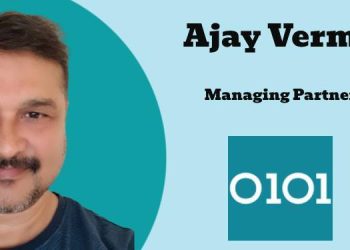Founded in 2013 by communications veteran Diana Fernandes, Bloomingdale PR is a results-driven public relations consultancy. With over two decades of experience in media, strategic communication, and brand building, Fernandes envisioned a PR firm that would go beyond traditional storytelling—one that integrates communication into business strategy to drive real impact. Today, Bloomingdale PR aims to be a trusted partner for brands across industries, offering tailored solutions in media relations, digital PR, influencer marketing, and crisis management.
Headquartered in Mumbai, Bloomingdale PR has expanded its footprint across India, Southeast Asia, the GCC, North America, and Europe. Its work spans sectors, including consumer brands, technology, startups, healthcare, real estate, finance, and education.
It has helped established brands solidify their reputation and startups gain visibility in competitive markets. Its approach is simple yet powerful—deep industry insights, strategic execution, and strong relationships with the media, influencers, and key stakeholders.
At the core of Bloomingdale PR’s philosophy is a commitment to personalised attention. Unlike larger agencies that follow a one-size-fits-all model, it said that it believes in crafting bespoke communication strategies tailored to each client’s unique needs.
Whether it’s securing high-impact media coverage, managing brand crises, or driving influencer-led campaigns, our solutions are designed to amplify brand presence and build lasting credibility. With a team of seasoned PR professionals, content strategists, and digital marketing experts, we ensure that our clients stay ahead in an ever-evolving media landscape.
Over the years, it has worked with brands, including VIP Industries, Glenmark Pharma, Reliance Jio Games, Naturals Ice Cream, Purplle, and Danube Properties, among others. Its expertise in crisis management has helped businesses navigate challenging situations, while its media outreach strategies have positioned brands and their leaders as thought pioneers in their respective industries.
Its impact extends beyond India, with a strong presence in Singapore, the UAE, and the US, where it executes multi-market PR campaigns for global clients. The firm explains that its success is driven by its ability to blend traditional PR with digital storytelling, leveraging social media, influencer collaborations, and data-driven strategies to maximise engagement and reach. Whether launching a new product, shaping a brand’s public image, or handling sensitive corporate crises, Bloomingdale PR operates with agility, precision, and a deep understanding of the media ecosystem.
Under the leadership of Fernandes and CEO Vikram Kharvi, Bloomingdale PR looks to continue to set new benchmarks in strategic communications. It says that its mission is clear—to help brands tell compelling stories, build trust, and create meaningful connections with their audiences. In a world where perception shapes reality, the aim is to ensure that its clients are always seen in the best light, backed by powerful narratives that resonate.
Medianews4u.com caught up with Vikram Kharvi, CEO Bloomingdale PR.
Q. How is the PR landscape evolving with digital-first strategies, AI-driven insights, and purpose-led storytelling?
PR today doesn’t work the way it used to. Earlier, brands focussed on getting featured in newspapers and prime-time slots. Now, if a story isn’t making noise online, it barely exists. Attention spans are shorter, news cycles move faster, and PR isn’t just about getting coverage—it’s about owning the conversation.
The shift isn’t just digital, it’s strategic. Brands are creating their own media platforms—newsletters, LinkedIn content, podcasts—because they can’t rely only on traditional outlets anymore. That’s where AI comes in. It’s not replacing PR, but it’s making it smarter. Tracking sentiment, predicting crises, and spotting trends happens in minutes instead of weeks. But relationships, instincts, and judgment? That’s still 100 percent human.
Then there’s the purpose factor. Customers don’t just buy products, they buy into what a brand stands for. Companies that communicate their values with authenticity, not PR spin, are the ones earning real credibility.
The fundamentals haven’t changed. PR is still about reputation, influence, and trust. But the way brands build them today is completely different. The ones adapting are leading. The ones still relying only on press releases? They’re struggling to stay relevant.

Q. How is Bloomingdale PR reshaping and adjusting its strategy in a changing environment?
PR has changed dramatically, and so have we. At Bloomingdale PR, the focus is no longer just on media coverage but on building influence where it matters. The approach has shifted to integrated storytelling, where traditional PR, digital strategy, and thought leadership work together to shape brand perception.
One big shift has been how brands own their narrative. Earlier, companies relied entirely on media to tell their story. Now, we help clients create their own media platforms through LinkedIn content, podcasts, newsletters, and strategic collaborations. If a brand isn’t actively engaging with its audience, it’s already behind.
AI has also changed how we work. It’s helping with sentiment analysis, trend forecasting, and media monitoring at a scale that wasn’t possible before. But PR is still about relationships, instincts, and timing—no AI tool can replace that. What we’ve done is combine technology with human expertise to stay ahead of trends and manage reputation proactively.
Another major shift is how brands communicate purpose. It’s no longer enough to say the right things; audiences expect companies to stand for something real. PR today is about aligning storytelling with business actions, ensuring that a brand’s messaging is backed by authenticity.
The fundamentals of PR haven’t changed, but the execution has. At Bloomingdale PR, the focus is on strategic visibility, credibility, and influence, making sure brands don’t just get noticed but also earn trust in a rapidly evolving landscape.
Q. What goals have been set by the agency in 2025 in terms of revenue, profit growth etc?
The focus for 2025 is on sustainable growth, deeper client partnerships, and expanding strategic capabilities rather than just chasing numbers. While revenue and profitability remain key, the real goal is to scale smartly without compromising on quality or industry leadership.
A few key priorities for the year:
Stronger revenue streams through value-driven services instead of just adding more clients. Expanding strategic advisory, crisis management, and reputation-building services will be a key growth driver.
Profitability with efficiency by optimising costs and leveraging AI for research, trend analysis, and sentiment tracking while keeping creative and strategic work human-driven. The focus is on higher margins rather than just topline growth.
Expanding digital influence as PR is no longer just about media relations. Strengthening content-driven PR, thought leadership positioning, and digital reputation management will help clients stay ahead.
Building leadership within the industry by actively shaping PR conversations, engaging with industry bodies, contributing insights, and mentoring the next generation of professionals.
Rather than setting rigid targets, the agency is focussing on measurable impact—both in business results and industry reputation. Growth isn’t just about numbers but about building a future-ready PR firm that stays ahead of the curve.
Q. Could you talk about recent work done with clients like Brother India, Hyfun Foods, Mad Over Donuts, Zostel and Naturals Ice Cream etc that stands out?
The past year has been about creating high-impact, story-driven campaigns that don’t just generate media coverage but also build long-term brand credibility. Some recent work that stands out:
· Brother India – With automation and digitisation reshaping workplaces, the challenge was to position Brother India as more than just a printing solutions company. The strategy focused on thought leadership, industry insights, and positioning the brand as a partner in business transformation.
· Hyfun Foods – India’s frozen food market is booming, but consumer awareness is still evolving. The approach was to highlight the role of frozen foods in modern Indian kitchens while establishing Hyfun as a brand that balances convenience with quality. The campaign leveraged digital storytelling, chef collaborations, and category education to shift perceptions.
· Mad Over Donuts – A brand that already has strong recall, the focus was on keeping it relevant and top of mind. The campaign tapped into nostalgia, cultural trends, and influencer collaborations to make donuts more than just a dessert—positioning them as an anytime indulgence.
· Zostel – The brand is synonymous with backpacking culture, but the challenge was to expand the conversation beyond hostels to an overall experience-driven travel movement. The strategy included curating real traveller stories, building community-driven engagement, and highlighting experiential stays across India.
· Naturals Ice Cream – A legacy brand that doesn’t rely on traditional advertising but thrives on word of mouth. The work focused on amplifying its heritage, regional flavors, and craftsmanship through PR storytelling, celebrating its deep-rooted connection with Indian consumers.
Each of these campaigns was designed not just to gain visibility but to shape brand narratives in a way that drives long-term impact. It’s not just about getting coverage; it’s about building trust, loyalty, and cultural relevance.
Q. How has AI been integrated into the agency to better serve clients?
AI has become an essential tool in the way PR functions, but it’s not replacing human expertise—it’s making strategy sharper, decisions faster, and execution more efficient. The agency has integrated AI in ways that enhance, rather than automate, the storytelling process.
Some key areas where AI is making a difference:
Real-time sentiment analysis helps track how audiences are reacting to a brand or campaign across platforms. This allows for quicker response times, ensuring brands stay ahead of potential reputation risks.
AI-driven media monitoring provides deep insights beyond just coverage tracking. It helps identify emerging trends, competitor movements, and audience behavior patterns that inform better PR strategies.
Predictive analytics helps forecast potential crises before they escalate. Instead of reacting when an issue blows up, AI-driven tools allow for proactive reputation management.
AI-assisted content creation speeds up research, trend analysis, and drafting, but final storytelling, messaging, and relationship-building remain human-led. AI provides the data; experience ensures the right strategy.
Audience intelligence tools allow for hyper-targeted media outreach. PR is no longer about mass pitching; it’s about sending the right message to the right journalist or influencer at the right time.
The goal is not to let AI take over but to use it in a way that allows teams to focus on high-impact work. Strategy, creativity, and relationships will always be human-driven, but AI is helping PR professionals move smarter and faster.

Q. In terms of ethical AI use in PR is balancing innovation with integrity a challenge?
It’s definitely a challenge, but also a necessity. AI in PR has opened up incredible possibilities, from sentiment analysis to predictive reputation management, but like any powerful tool, it needs to be used responsibly. The key is to ensure that innovation doesn’t come at the cost of ethics, transparency, or trust.
One of the biggest concerns is AI-generated content. While AI can assist with research and drafting, relying too much on it risks losing authenticity. PR is about genuine human connections, nuanced storytelling, and emotional intelligence—things AI can’t replicate. The balance comes from using AI for efficiency while keeping creativity and decision-making human-led.
There’s also the issue of misinformation and manipulation. AI can amplify narratives at an unprecedented scale, but that also means the potential for spreading misleading or biased information is high. The responsibility lies with PR professionals to ensure accuracy, fact-checking, and ethical storytelling.
Then there’s data privacy. AI-driven insights rely on vast amounts of audience data. Brands need to be transparent about how they collect and use data to maintain credibility. Ethical PR means respecting audience privacy while still leveraging AI for smarter engagement.
Balancing innovation with integrity isn’t just a choice, it’s what will define the credibility of PR in the AI era. The agencies that embrace AI responsibly will lead the industry, while those that misuse it risk losing trust, the most valuable currency in PR.
Q. For effective usage of social media is domain knowledge of each platform like X, Meta needed?
Absolutely. Social media isn’t just about posting content—it’s about understanding how each platform works, how audiences behave on them, and how algorithms distribute content. Without domain knowledge of each platform, brands risk putting out generic content that doesn’t get the engagement or visibility it deserves.
Each platform has its own unique behaviour. What works on LinkedIn won’t necessarily work on X or Instagram.
X is real-time, fast-moving, and thrives on sharp, opinion-driven content. If you’re not quick, you’re irrelevant.
Instagram and Facebook (Meta) prioritize visually appealing, engaging content. Trends, reels, and interactive formats drive more reach than traditional posts.
LinkedIn is about credibility. Long-form insights, industry trends, and professional storytelling matter more than clickbait engagement.
Brands and individuals who succeed on social media understand the nuances of each platform and tailor their content accordingly. Simply cross-posting the same content across platforms doesn’t work anymore. The ones who master platform-specific strategies are the ones truly leveraging social media to its full potential.
Q. How does the agency use data analytics to make better decisions?
Data analytics has become central to how PR strategies are shaped. It’s no longer just about intuition or experience; decisions are now backed by real-time insights that help fine-tune messaging, optimize media outreach, and measure impact more effectively.
One of the key areas where data plays a role is sentiment analysis. Tracking public perception across platforms helps in identifying potential risks, understanding audience sentiment, and adjusting messaging before an issue escalates. It also helps in refining brand positioning based on what resonates most with the audience.
Media monitoring and performance tracking have also evolved beyond simple coverage reports. It’s not just about how many stories were placed but about how those stories are performing—engagement, reach, and the overall impact on brand perception. This allows for better targeting and sharper storytelling.
Predictive analytics is another area that’s changing the game. It helps in forecasting potential crises, identifying trends before they peak, and optimising campaign timing for maximum impact. Instead of reacting, brands can take a proactive approach to reputation management.
The biggest shift is in measurement. PR has always struggled with quantifying ROI, but now with data-driven insights, evaluating media value, audience engagement, and competitive benchmarking has become far more precise. The agency uses these insights to not only show results but also to refine future strategies, making every campaign more effective than the last.
Q. Is Bloomingdale PR increasingly using visual and multimedia storytelling to get the clients message across?
Absolutely. The way people consume content has changed, and PR is no longer just about press releases and written stories. Attention spans are shorter, digital platforms are dominant, and visual storytelling has become essential in making an impact.
At Bloomingdale PR, the focus has been on integrating multimedia elements into communication strategies to ensure that a brand’s message isn’t just heard but also seen and remembered.
Short-form videos, reels, and behind-the-scenes content help bring brands closer to their audience in a way that traditional PR cannot.
Infographics and data visualisations make complex information easier to digest, especially when it comes to reports, research findings, and brand announcements.
Interactive storytelling through carousels and motion graphics helps brands engage better on platforms like LinkedIn, Instagram, and X.
Every campaign now factors in visual and multimedia components because a well-crafted image or video often conveys more than paragraphs of text. The shift isn’t just about staying relevant—it’s about ensuring that client messaging reaches the audience in a format they engage with the most.

Q. Can PR fix a bad product or at least give company leeway, time to improve?
PR can do a lot—shape narratives, manage perceptions, and build reputations—but it can’t fix a bad product. No amount of storytelling can compensate for something that consistently fails to meet customer expectations.
What PR can do is give a company leeway to improve by managing the conversation strategically. If a product isn’t perfect but has potential, PR helps by:
Owning the narrative – Addressing shortcomings openly rather than letting critics define the story. A brand that acknowledges issues and commits to fixing them builds credibility rather than losing it.
Focussing on strengths – Highlighting what works well while improvements are being made. If a product has unique features or solves part of a bigger problem, PR ensures that message isn’t lost.
Customer engagement – Instead of avoiding negative feedback, PR can turn it into an opportunity for brand engagement. Transparency and direct communication with customers can build goodwill even in a crisis.
Managing expectations – If a company needs time to refine its offering, PR helps in shaping realistic expectations rather than allowing disappointment to spread unchecked.
In the short term, PR can manage reputation, but in the long run, only the product can sustain it. If what’s being sold isn’t up to the mark, sooner or later, the truth catches up. The best PR strategy is always backed by substance.
Q. What crisis management strategies work in the digital age? Any recent examples?
Crisis management today is faster, more public, and more unpredictable than ever before. In the digital age, a crisis doesn’t unfold over days or weeks—it escalates in minutes. The response has to be just as swift and well-calibrated.
Some key strategies that work today:
· Acknowledge quickly, but don’t rush a response – Brands often wait too long to react, hoping the issue will die down. In reality, silence fuels speculation. At the same time, a hasty, defensive response can make things worse. A simple acknowledgment like “We are aware of the situation and are addressing it” can buy time while crafting the right response.
· Own the narrative before it’s shaped for you – If a brand doesn’t take control of its own story, someone else will. Proactively addressing the crisis with transparency, rather than reacting defensively, helps regain trust.
· Use leadership voices – People trust people more than faceless statements. When a crisis hits, a well-communicated message from the CEO or leadership team carries more weight than a generic corporate statement.
· Monitor sentiment in real-time – Crisis response isn’t just about putting out one statement. It’s about tracking how people are reacting, what questions remain unanswered, and adapting the response accordingly.
A recent example of good crisis management is Zomato’s handling of delivery partner issues. When concerns were raised about unfair compensation structures, Zomato’s leadership responded with transparency, shared their internal challenges, and outlined steps they were taking to fix the system. Rather than ignoring the backlash, they leaned into the conversation, which helped contain the damage.
In the digital era, speed, authenticity, and adaptability define good crisis management. The brands that handle crises well aren’t necessarily perfect—they’re just better at managing trust when things go wrong.

Q. Are integrated PR strategies going to be key in driving success for brands across industries in the coming six years?
Absolutely. PR is no longer just about media relations—it’s about building influence across multiple touchpoints. Over the next six years, integrated PR will go from being a competitive advantage to an absolute necessity.
Brands can no longer afford to communicate in silos. A press release alone isn’t enough, nor is just having a social media presence. The real impact comes from seamless storytelling across earned, owned, and shared media.
Traditional PR will continue to play a role, but its success will depend on how well it integrates with content marketing, influencer collaborations, and brand-owned media channels.
Thought leadership will be key. Brands will need to shape industry conversations through LinkedIn, podcasts, and direct audience engagement rather than waiting for journalists to tell their story.
AI and data-driven insights will ensure that PR strategies aren’t based on gut feeling alone. Real-time monitoring, predictive analytics, and hyper-personalised communication will become standard.
As brand trust becomes harder to earn, integrated PR will be essential in building credibility, driving engagement, and ensuring that brands don’t just get noticed but stay relevant. The ones who master it will lead, while those stuck in traditional PR will struggle to keep up.
Q. What will PR look like in 2030?
PR in 2030 will be faster, more data-driven, and more direct-to-audience than ever before. The biggest shift will be in how brands control their own narratives. Waiting for media coverage will be outdated—brands will be their own media powerhouses.
Some key changes on the horizon:
AI will drive real-time reputation management. Crisis response won’t take hours; it will happen in minutes through automated monitoring, AI-driven sentiment tracking, and predictive PR strategies.
Journalist relationships will evolve. Media will still play a role, but PR won’t just be about pitching stories. Influencer PR, direct brand storytelling, and thought leadership content will carry more weight.
Video and immersive content will dominate. Press releases and text-heavy reports will take a backseat to short-form video, interactive content, and AI-generated visuals that make PR messaging more engaging.
Trust will be the ultimate currency. Audiences will continue to demand more transparency, and PR will shift from just storytelling to story-doing—where brands will be expected to show, not just tell.
2030 won’t be about whether PR is relevant—it will be about which brands evolve fast enough to stay ahead. The fundamentals of reputation management will remain the same, but the execution will be completely transformed.

















